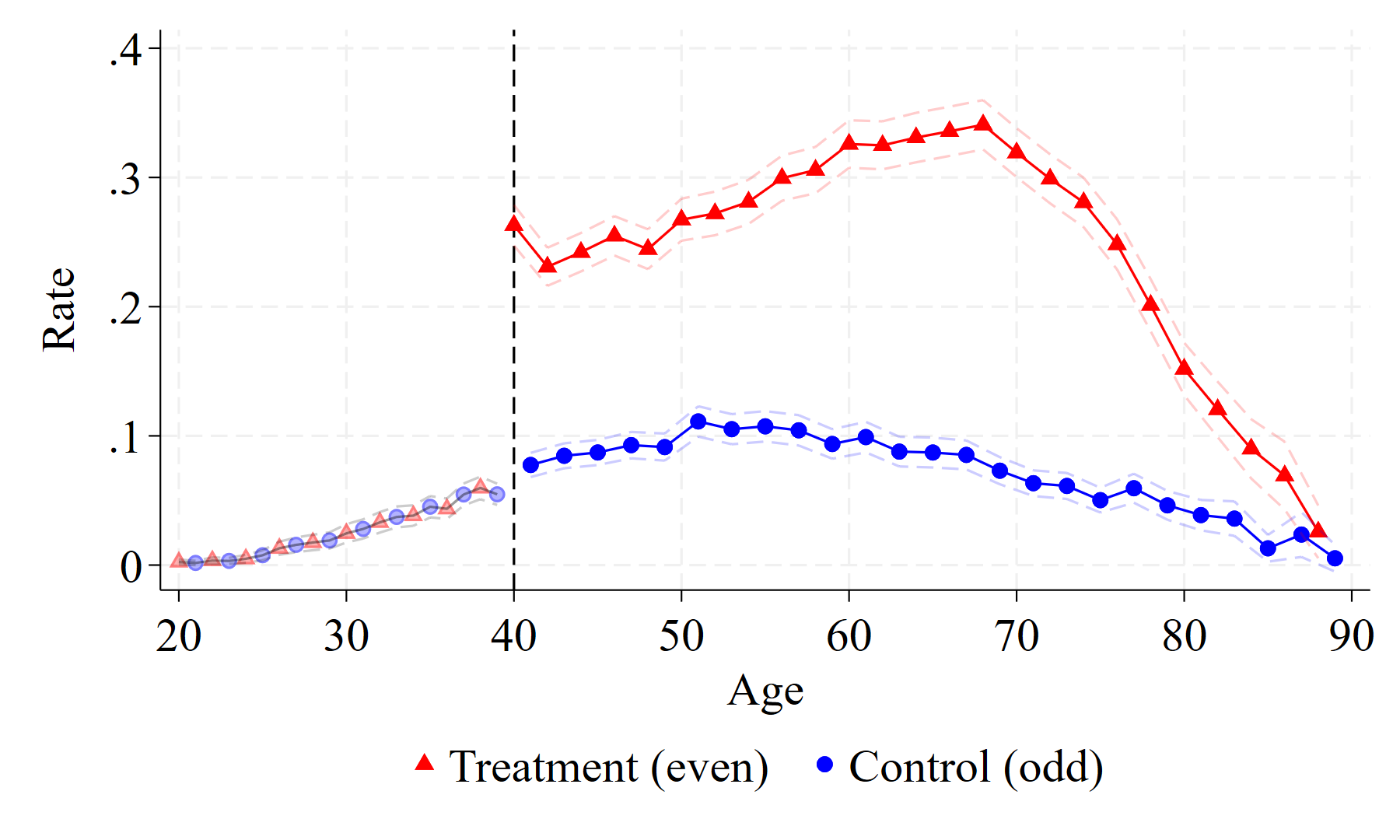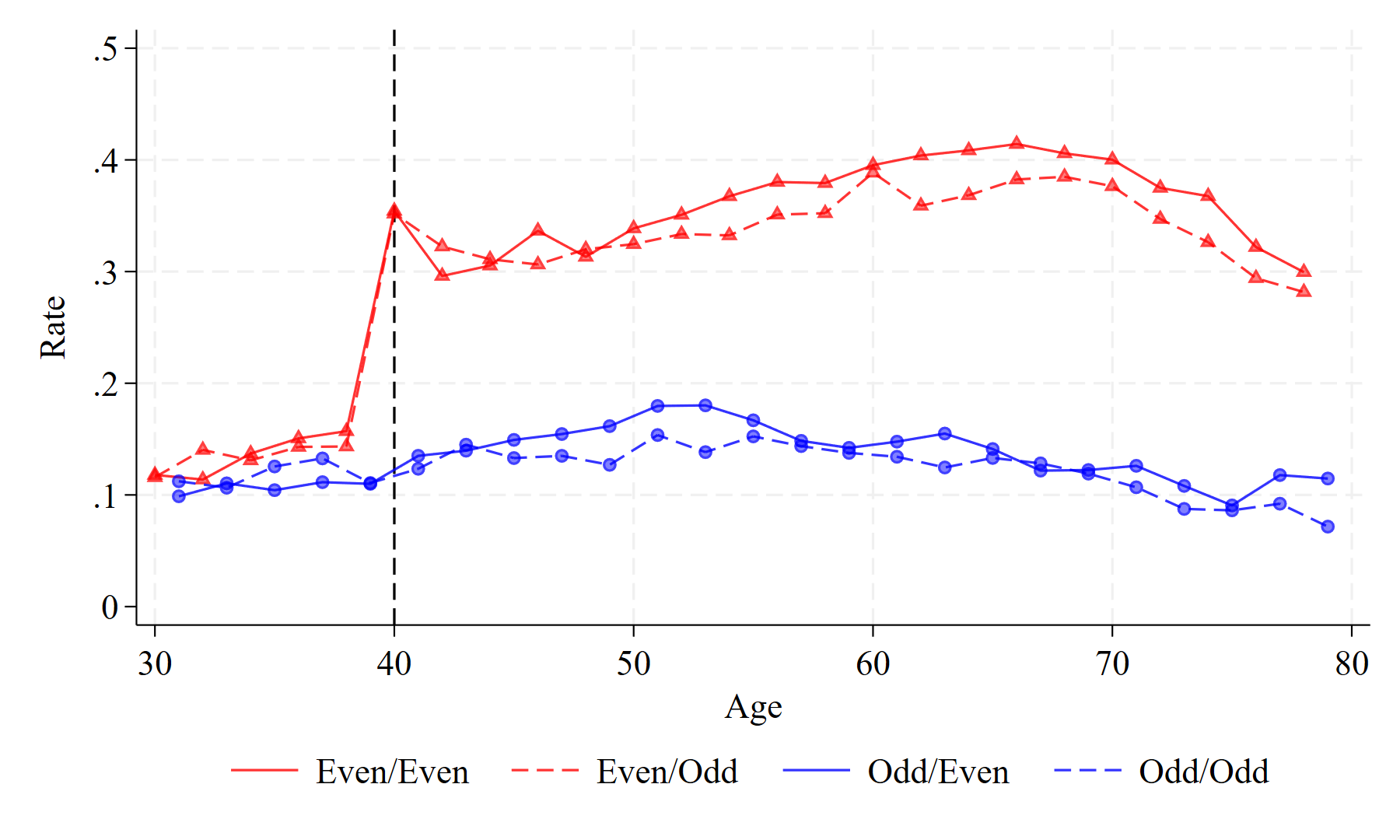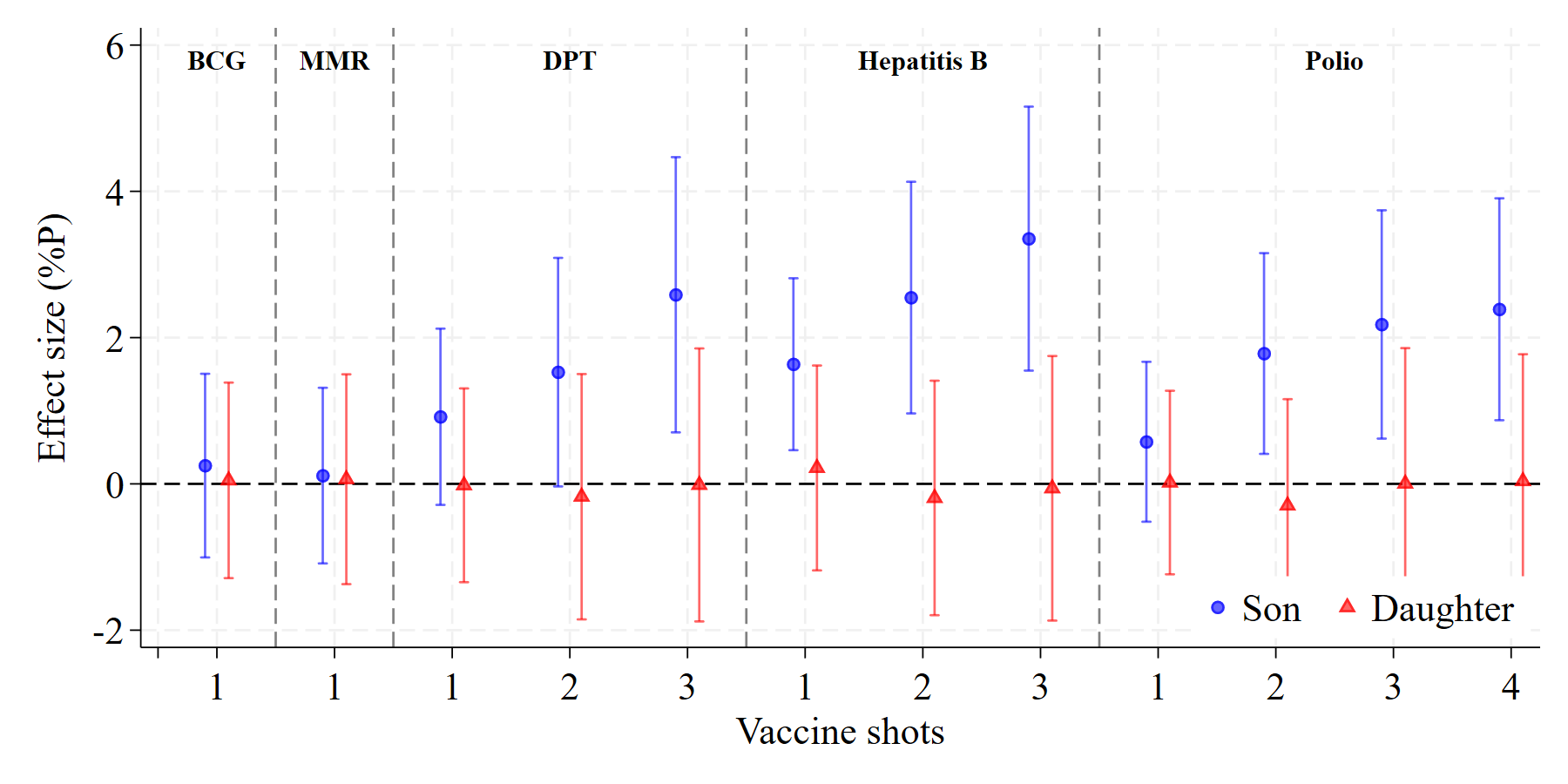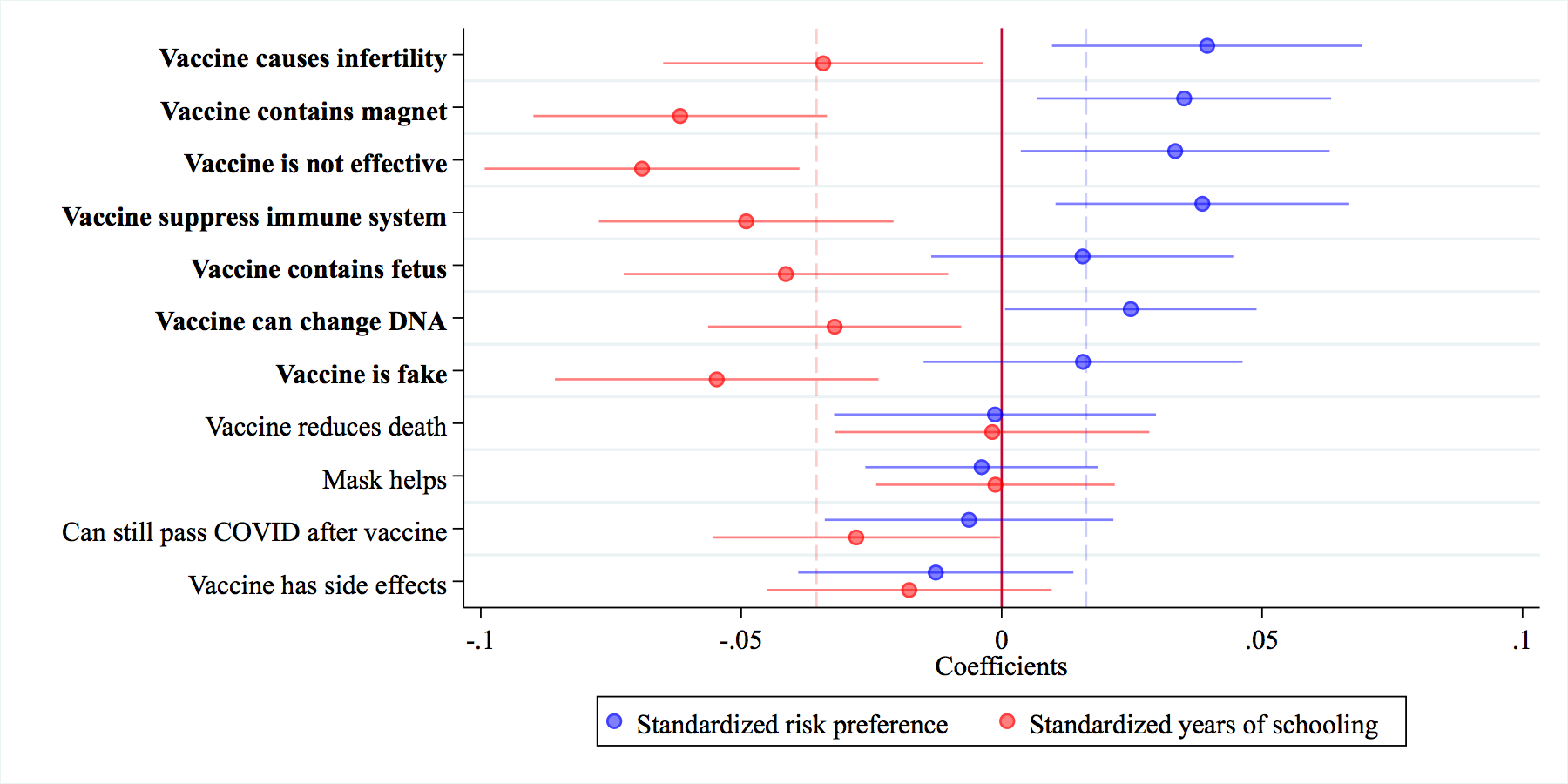Job market paper
Health Screening and Selection: Evidence from Biennial Subsidies in South Korea
[Manuscript]
[Slides]
Public health screening programs are widely used, but their impact is often limited by low participation among high-risk individuals who stand to benefit most from early diagnosis. I study selection into health screenings and their causal effects using quasi-random variation from South Korea’s National Health Screening Program, which subsidizes 90-100% of screening costs every other year at even-numbered ages. Using nationally representative survey data, I find that subsidy eligibility increases screening completion by 16-19 percentage points (183-295%). Compliers with the subsidies are predominantly from lower socioeconomic backgrounds and are in poorer health than those who always participate regardless of subsidies. Using national health insurance claims data, I find that subsidy eligibility increases both in-situ and invasive cancer diagnoses by 17-19%, as well as treatments for conditions including cancer precursors, hypertension, diabetes, high cholesterol, and osteoporosis. These results demonstrate that subsidies can effectively target high-risk individuals and strengthen the impact of public health screening programs.
 Fig: Stomach cancer screening rate by age
Fig: Stomach cancer screening rate by age
Working papers
Spousal Spillover in Health Screening: Evidence from National Health Screening Program in South Korea
with
Hyuncheol Bryant Kim
and
Jaehyun Jung
[Manuscript]
Social interactions can strongly shape preventive health behaviors, but little is known about how they shape participation in formal health screening programs. This study investigates spousal spillovers in screening participation using South Korea’s National Health Screening Program, which subsidizes 90–100% of screening costs biennially at even-numbered ages. Exploiting the spouse’s even age as an instrument, we estimate that a spouse’s screening increases one’s own participation by 7.9 percentage points, equivalent to 37% of the direct subsidy effect. Spillovers primarily run from wives to husbands, and evidence points to coordination as a key mechanism, as many couples undergo screening on the same day. These findings highlight the importance of household dynamics in preventive care and suggest that policies engaging families jointly could substantially enhance the effectiveness of public health screening programs.
 Fig: Health screening rate by own age/spouse's age
Fig: Health screening rate by own age/spouse's age
When Gender Norms Shape the Returns to Education: Evidence from Health Behaviors in Indonesia
with
Jaysa Rafi
Education is widely used as a tool for improving health, but its returns depend on cultural and gender norms. This paper examines Indonesia’s primary school construction program and its long-term effects on education and health behaviors. Using geographic and cohort variation in school exposure, we find that the program increased primary school completion for both genders, but downstream outcomes diverged. For women, higher schooling declined, likely due to household budget constraints and son preference, while men were unaffected. Women exposed to the program were less likely to smoke, whereas men’s smoking, associated with social status and masculinity, did not change. Those exposed to the program were more likely to vaccinate their high-parity sons, but not daughters, consistent with stronger son preference for later-born children. These results show that education policies can yield unequal health returns when social norms shape how education translates into behaviors.
 Fig: Effect of primary school construction on infant vaccinations
Fig: Effect of primary school construction on infant vaccinations
Misinformation Belief, Health Behavior, and Labor Supply during the COVID-19 Pandemic: Evidence from Tricycle Drivers in Philippines
with
Hyuncheol Bryant Kim,
Syngjoo Choi,
Yasuyuki Sawada,
and
Takashi Yamano
[Manuscript]
This study aims to analyze the behavioral consequences of people’s beliefs in conspiracy theories and misinformation surrounding COVID-19 vaccines. We employ unique panel data to examine the relationship of belief in misinformation, vaccination behavior, and labor supply of tricycle drivers in the Philippines. We find that individuals with higher risk preference are more likely to hold misinformed beliefs. These beliefs, in turn, are associated with reductions in vaccination and other preventive health behaviors. We also find that beliefs in misinformation delay workplace recovery.
 Fig: Correlations between belief in misinformation, risk preference, and education
Fig: Correlations between belief in misinformation, risk preference, and education
Other publications
Geographic differences in the mortality burden of the Covid-19 pandemic
with
Julian Reif
and
Hanke Heun-Johnson
IGPA Policy Spotlight, 2023
[Manuscript]
Post-Pandemic Employment Recovery: Case Study of Tricycle Drivers in Metro Manila
with
Takashi Yamano,
Yasuyuki Sawada,
Shigehiro Shinozaki,
Hyuncheol Bryant Kim,
and
Syngjoo Choi
Informal Services in Asian Cities: Lessons for Urban Planning and Management from the Covid-19 Pandemic, 2022
[Manuscript]
Work in progress
The Cost of False Alarms: Evidence from Cancer Screening in South Korea
What Drives Cancer Screening Use? Evidence from Migration
with
Julian Reif
and
Tatyana Deryugina